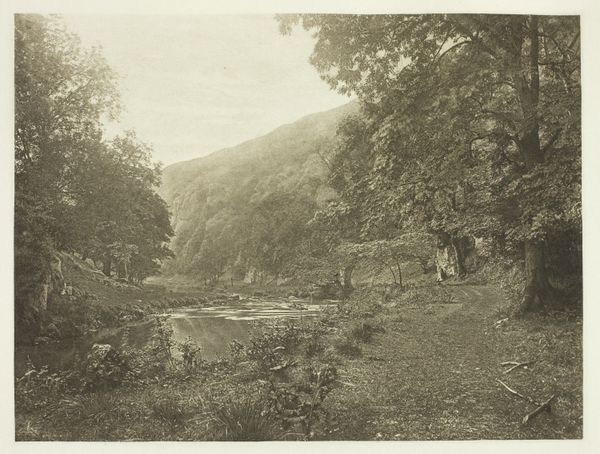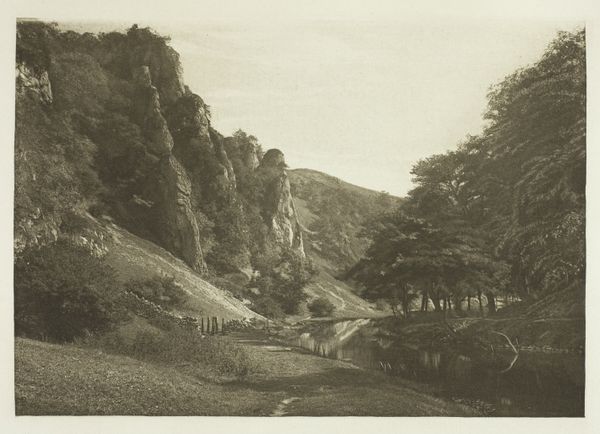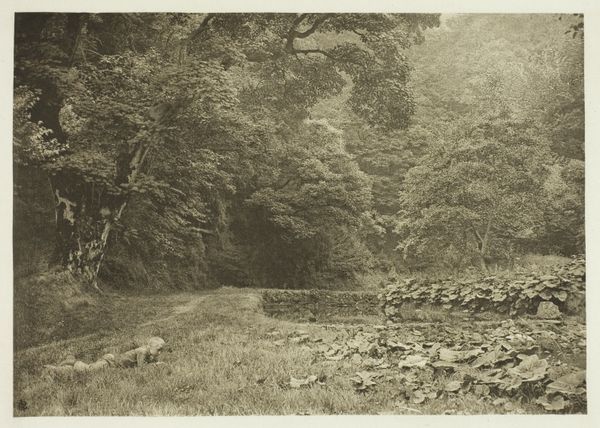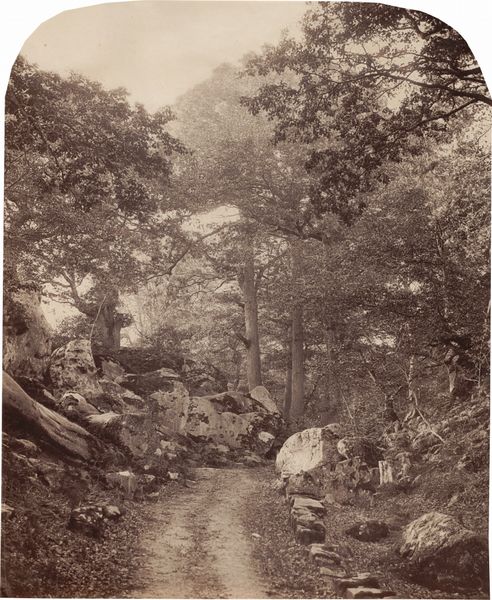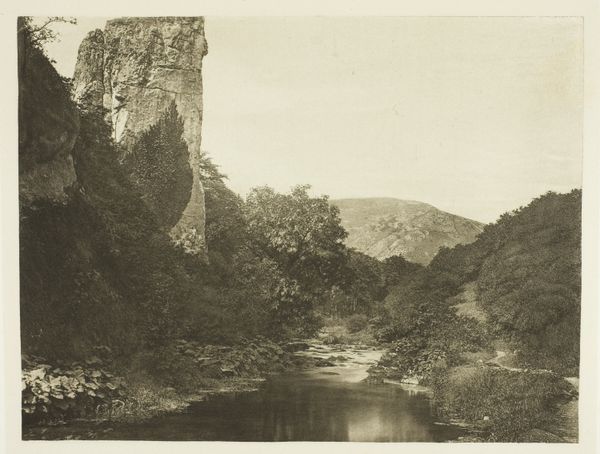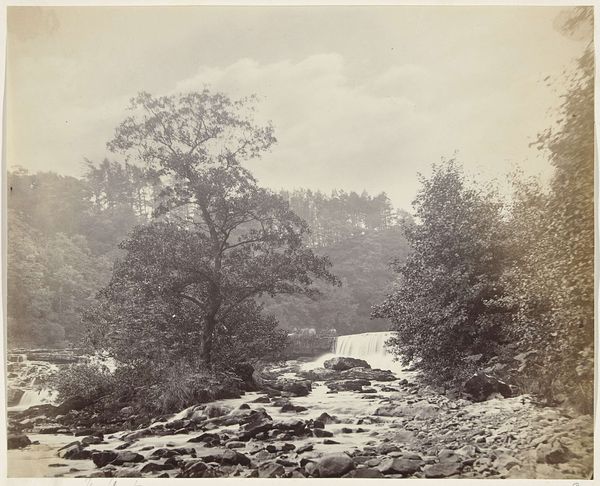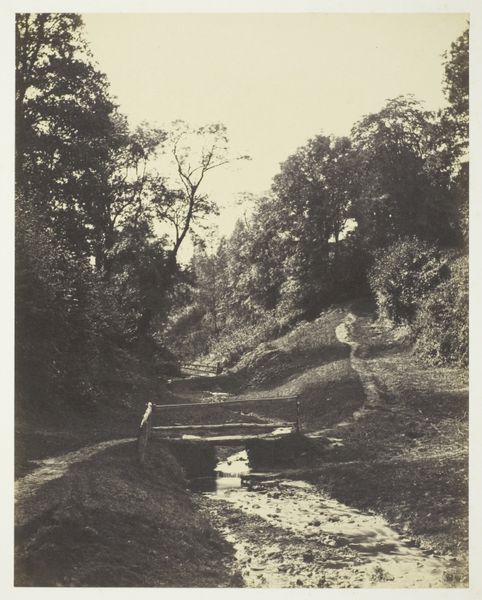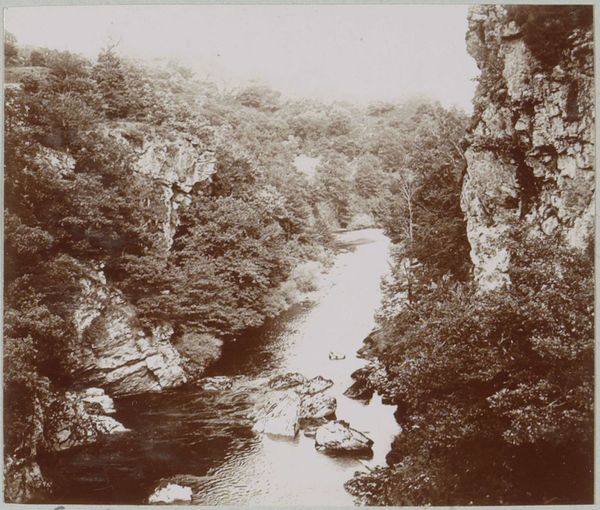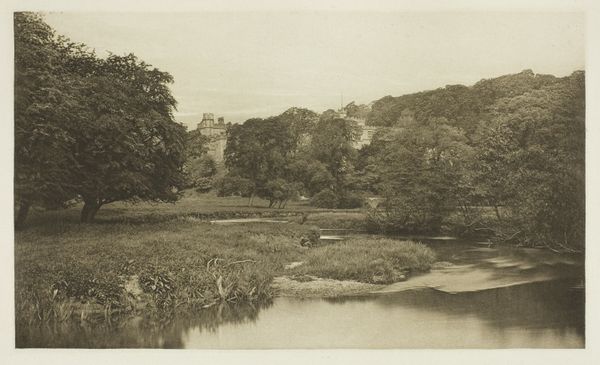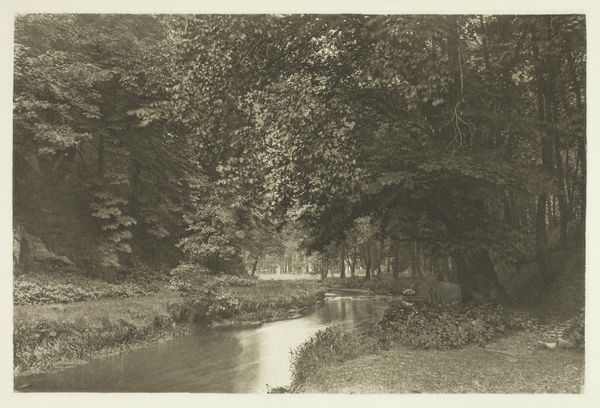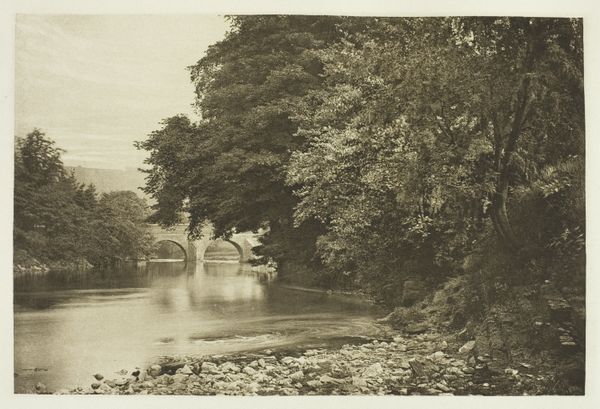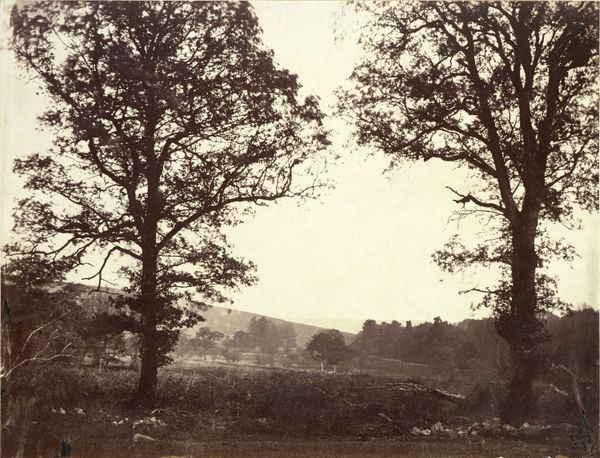
Dimensions: 15.5 × 20.2 cm (image); 17.2 × 21.6 cm (paper); 24.5 × 31.6 cm (album page)
Copyright: Public Domain
Editor: Here we have Peter Henry Emerson’s gelatin silver print, “Tissington Spires, Dove Dale,” from around 1880. It's a beautifully muted landscape. The rocks and trees lining the riverbank feel very serene and classically English. What strikes you most about this photograph? Curator: Well, what immediately stands out is how Emerson is situating himself within a very particular discourse around photography and art more broadly. He was a staunch advocate for photography as fine art. This image, like much of his work, is deliberately pictorial. Editor: Pictorial? In what sense? Curator: He employed techniques, like soft focus, to mimic the effects of painting and etching. Why do you think he might have chosen to emulate painting in photography’s early days? Editor: I suppose to legitimize it as an art form, to elevate it beyond just documentation? Curator: Precisely! Emerson was actively fighting against the perception of photography as purely scientific or documentary. He saw it as capable of conveying emotion, atmosphere, and artistic vision. Think about the broader cultural context of late 19th century England. Romanticism was still a powerful influence, with its emphasis on the beauty and sublimity of nature. This image aligns with that sensibility, wouldn't you say? Editor: I see that. So, this seemingly straightforward landscape is actually making a bold statement about photography's potential. Curator: Exactly. It's about asserting photography's place within the established art world, pushing boundaries and challenging conventions of his time. I wonder what impact Emerson has in contemporary photography? Editor: This has really made me think differently about photography from this period. Thanks!
Comments
No comments
Be the first to comment and join the conversation on the ultimate creative platform.
